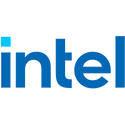
Apple Reports Q4 2024 Financial Results
Apple today announced financial results for its fiscal 2024 fourth quarter ended September 28, 2024. The Company posted quarterly revenue of $94.9 billion, up 6 percent year over year, and quarterly diluted earnings per share of $0.97. Diluted earnings per share was $1.64,1 up 12 percent year over year when excluding the one-time charge recognized during the fourth quarter of 2024 related to the impact of the reversal of the European General Court's State Aid decision.
"Today Apple is reporting a new September quarter revenue record of $94.9 billion, up 6 percent from a year ago," said Tim Cook, Apple's CEO. "During the quarter, we were excited to announce our best products yet, with the all-new iPhone 16 lineup, Apple Watch Series 10, AirPods 4, and remarkable features for hearing health and sleep apnea detection. And this week, we released our first set of features for Apple Intelligence, which sets a new standard for privacy in AI and supercharges our lineup heading into the holiday season."
"Today Apple is reporting a new September quarter revenue record of $94.9 billion, up 6 percent from a year ago," said Tim Cook, Apple's CEO. "During the quarter, we were excited to announce our best products yet, with the all-new iPhone 16 lineup, Apple Watch Series 10, AirPods 4, and remarkable features for hearing health and sleep apnea detection. And this week, we released our first set of features for Apple Intelligence, which sets a new standard for privacy in AI and supercharges our lineup heading into the holiday season."































































